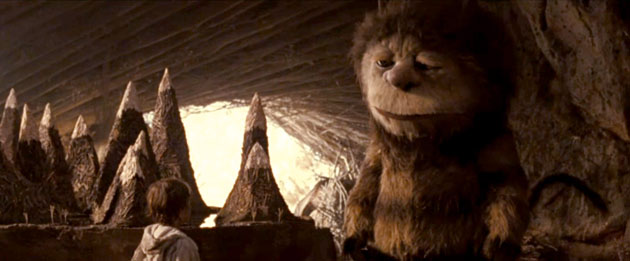K.K. Barrett

If you’re doing your job you’re thinking of all the direction choices, you’re thinking of all the DP’s choices, you’re thinking of all the costume choices. You’ve really got to wear all those hats. So when you start to have discussions with those people you’ll at least have been running into some of the problems. You’ll have a logic-stream of how you arrived at it. You’ll also be able to accommodate and understand their version of it so you can meld the two together without starting from scratch. You should always think as if you have to light every set. And as if you have to photograph every set. As if you have to put the directors through it and where you would put the camera.
AS: You can create a beautiful set but if you have no way to get light in there and then it’s impossible to shoot it.
KK: If you’ve done your job well, the camera will come in and go right to where you want it to. There are sweet spots. You’ll find the sweet spots. Kubrick used to light his sets to the point that he didn’t need a gaffer around. Leave me with the camera and the actors. They were in a constant environment. It works with over-lit sets or brightly-lit sets. But more and more with the technology we have now with cameras, you don’t need to over-light. Choosing practical light sources, soft and hard lighting, can be more important than painting.
You should interview Jack Fisk. On Terence Malik’s Tree of Life they found matching houses, one facing morning sun, one facing evening sun. Depending on the time of day they went from house to house and shot naturally.
I’d like to hear from production designers grounded in the pre-digital era but who are still working and learn how that transition has affected them. Not job-security-wise. Just taking advantage of the tools of the trade. There’s a lot of things to be learned from the earlier methods because they were simpler. A lot of times the more tools you have doesn’t mean you’ll use them. It’s like a city. You can live in the biggest city in the world and you’ll only use your neighborhood. Your store, you’re recreational spot. Your house. Your connective tissue. Even if it’s just a corridor the full length of the city, you never walk to the sides. There’s a lot to be said about stripping away things. And the new cameras are doing that.
AS: How closely do you work with the DP?
KK: Extremely closely. I think you have to. Because they need you and you need them. You need to know how each other think. I work right next to the DP constantly. That’s why I want to be on set so much.
AS: Do you work with them closely in preproduction as well?
KK: Absolutely. Try to show them stuff as much as I can.
AS: You didn’t work with your usual DP, Lance Acord, on Extremely Loud and Incredibly Close…
KK: The original DP, Harris Savides, was a friend of mine. We had done a lot of commercials together in the early days when we were both starting out. But I’d never done a film with him. He had a style that was completely different from Chris Menges, who took over the film. I had to adjust. Because I’d built for illumination in one way, but then had to completely adjust to Chris’ way. Soft ceilings to hard ceilings. It’s just a different mentality. They’re both really dramatic lighters but come from opposite ends of the spectrum. It was really interesting. I had to completely switch gears. It was a really fun process to do that. To one day just go like, Okay, I have to completely rethink all of this. I had to talk to Chris and figure out what his sensibility was. I was already a big fan and I’d singled out some small films that he did that I thought were gorgeous.
Pingback: Grant Major